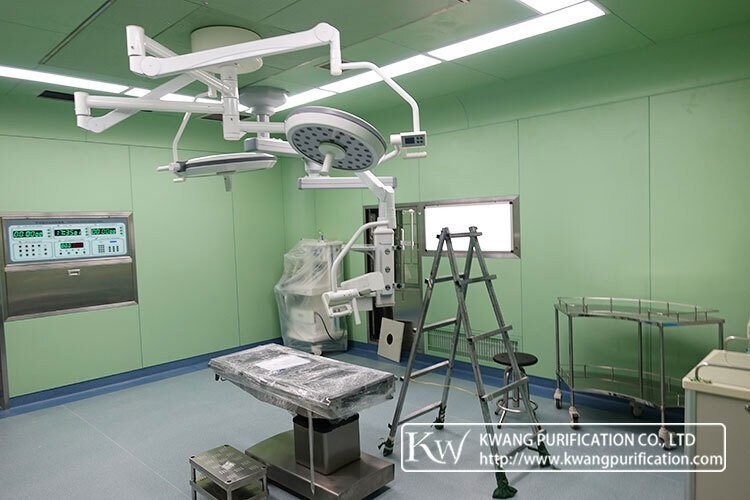The Importance of Medical Clean Rooms: Benefits, Design, and Maintenance
- 2024-01-07
- View 12
In the healthcare industry, medical clean rooms are crucial in ensuring safety and protection from contamination. These controlled environments are designed to reduce or eliminate the presence of airborne particles, microorganisms, and other potentially hazardous materials. In this article, we will take an in-depth look at medical clean rooms, their benefits, design requirements, and other relevant information.

What is a Medical Clean Room?
A medical clean room is a controlled environment that is designed to maintain a low level of airborne particles and microorganisms. The room is constructed with special materials and ventilation systems to prevent contamination and maintain a sterile environment. Medical clean rooms are typically used in healthcare facilities, research laboratories, and pharmaceutical manufacturing plants.
Benefits of a Medical Clean Room
The benefits of a medical clean room include:
Reduced risk of contamination: Clean rooms help to prevent contamination from airborne particles and microorganisms.
Increased safety: Medical clean rooms help to protect patients, staff, and products from hazardous materials.
Improved product quality: Clean rooms help to ensure that products are free from contaminants and meet quality standards.
Compliance with regulations: Medical clean rooms are required to comply with various regulations and guidelines, including those set by the Food and Drug Administration (FDA) and the International Organization for Standardization (ISO).
Design and Construction of a Medical Clean Room
The design and construction of a medical clean room are critical in ensuring that the room functions as intended. Some key factors to consider when designing and constructing a clean room include:
Cleanliness requirements: The level of cleanliness required will depend on the specific application of the clean room. The required level of cleanliness is usually determined by the number of particles per cubic meter of air.
Airflow: The airflow within the clean room is critical in ensuring that contaminants are properly removed. The direction of airflow should be carefully considered to prevent the spread of contaminants.
Materials: The materials used in the construction of the clean room should be non-porous and easy to clean. The walls, ceiling, and floors should be constructed of materials that can withstand frequent cleaning and disinfection.
Lighting: Adequate lighting is critical in ensuring that the clean room is properly illuminated for cleaning and inspection.
Medical Clean Room Classifications
Medical Clean rooms are classified based on the number of particles per cubic meter of air. The classifications are as follows:
Class 1: less than 1 particle per cubic meter
Class 10: less than 10 particles per cubic meter
Class 100: less than 100 particles per cubic meter
Class 1,000: less than 1,000 particles per cubic meter
Class 10,000: less than 10,000 particles per cubic meter
Medical Clean Room Maintenance
Maintaining a medical clean room is critical in ensuring that the room functions as intended. Some key factors to consider when maintaining a clean room include:
Regular cleaning and disinfection: The clean room should be cleaned and disinfected regularly to prevent the buildup of contaminants.
Monitoring: The clean room should be monitored regularly to ensure that the required level of cleanliness is maintained.
Staff training: Staff who work in the clean room should be trained on the proper procedures for maintaining cleanliness and preventing contamination.
FAQs
What is the difference between a clean room and a regular room?
A clean room is a controlled environment that is designed to maintain a low level of airborne particles and microorganisms.
What are the benefits of a medical clean room?
Medical clean rooms provide reduced risk of contamination, increased safety, improved product quality, and compliance with regulations.
What are some key factors to consider when designing and constructing a medical clean room?
Some key factors to consider when designing and constructing a medical clean room include cleanliness requirements, airflow, materials, and lighting.
What are the different clean room classifications?
Clean rooms are classified based on the number of particles per cubic meter of air, ranging from Class 1 (less than 1 particle per cubic meter) to Class 10,000 (less than 10,000 particles per cubic meter).
How is a medical clean room maintained?
A medical clean room is maintained through regular cleaning and disinfection, monitoring, and staff training on proper procedures for maintaining cleanliness and preventing contamination.
Conclusion
Medical clean rooms are essential in ensuring the safety and protection of patients, staff, and products from potentially hazardous materials. Proper design, construction, and maintenance of clean rooms are critical in ensuring that they function as intended. With the proper implementation and monitoring of clean rooms, the healthcare industry can continue to improve product quality and patient safety.
More of your interest
What You Need To Know About Food Clean Room
Definition And Origin Of Cleanroom Technology
Accelerate Cleanroom Project Delivery
